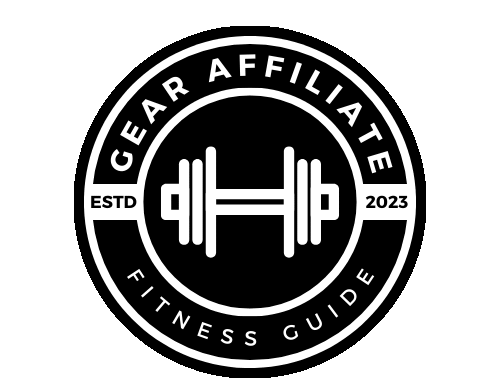
*Note: This is a generalized workout plan designed for beginners, both the exercises and Set/Rep schemes, ETC, are meant to be used as a general starting point, and will all change as one progresses in their fitness journey
Understanding the Upper/Lower Workout Split
The upper/lower workout split is a popular training regimen that divides weekly workout sessions into two distinct categories: workouts targeting the upper body and those focusing on the lower body. This split contrasts with other workout routines such as full-body workouts, push/pull splits, or body part splits, each of which offers its own unique structure and advantages. The primary goal of the upper/lower workout split is to ensure balanced muscle development by giving equal attention to both the upper and lower body, which is particularly beneficial for beginners.
Beginners often find the upper/lower workout split advantageous due to its straightforward structure. Typically, an upper/lower routine consists of four to six sessions per week, alternating between upper and lower body workouts. For example, a common schedule might involve training the upper body on Mondays and Thursdays, while dedicating Tuesdays and Fridays to lower body workouts. This frequency not only promotes muscle growth but also allows for adequate recovery time, essential for developing strength and preventing injury.
The benefits of incorporating an upper/lower split into a beginner’s fitness journey are manifold. First, this type of training regimen aids in building foundational strength in all major muscle groups, helping new lifters to avoid imbalances that can occur when specific areas are neglected. Furthermore, the flexibility in scheduling permits individuals to adapt their workout frequency according to personal commitments and recovery needs. Lastly, targeting both the upper and lower body encourages comprehensive development, ultimately making fitness routines more enjoyable and effective.
In conclusion, the upper/lower workout split presents a balanced approach for beginners, emphasizing the importance of evenly distributing training efforts across all muscle groups while also factoring in recovery and flexibility. By adhering to this structured method, newcomers to fitness can establish a strong base for future progress.
Essential Exercises for Upper and Lower Body Workouts
When creating an effective workout routine, it is crucial to include a mix of compound and isolation exercises for both the upper and lower body. Compound movements engage multiple muscle groups, providing greater overall strength and functional benefits. Conversely, isolation exercises target specific muscles, which can enhance muscle development and definition. For beginners, familiarizing oneself with basic exercises such as push-ups, rows, squats, and lunges is an excellent starting point.
For the upper body, push-ups are a fundamental exercise that develops chest, shoulder, and triceps strength. Variations like incline or knee push-ups can cater to different fitness levels, allowing novices to find their footing. Rows—performed using resistance bands, dumbbells, or cable machines—are equally beneficial for strengthening the back, lats, and biceps. Beginners may start with seated rows or bent-over rows to ensure proper form and prevent undue strain.
Moving on to lower body workouts, squats are essential for building leg strength and stability. This exercise targets the quadriceps, hamstrings, and glutes. Beginners can start with bodyweight squats, focusing on technique before adding resistance. Lunges, whether they are static, walking, or reverse lunges, offer a great way to improve balance and coordination, while effectively engaging the lower body muscles.
Understanding and implementing proper form is paramount to ensure safety and maximize results. Beginners should prioritize learning the correct techniques and modifications to suit individual fitness levels and goals. Furthermore, incorporating variety into workouts and embracing progressive overload—gradually increasing weights or reps—are vital strategies for continuous improvement. This balanced approach to upper and lower body workouts ensures both comprehensive muscle engagement and sustainable fitness progress.
Sample Upper/Lower Workout Plan for Beginners
The following sample workout plan is tailored specifically for beginners aiming to embrace an upper/lower workout split. This plan ensures a comprehensive balance between upper and lower body training, promoting muscle growth and overall strength development while allowing ample time for recovery.
The week is structured around four training days, with rest days strategically placed to aid recovery. The sample schedule is as follows:
| Day (Adjustable if Needed) | Workout | Exercises And Sets/Reps |
| Monday | Upper Body | Bench Press: 3 sets of 8-10 reps Seated Row: 3 sets of 8-10 reps Overhead Dumbbell Press: 3 sets of 10-12 reps Lat Pulldown: 3 sets of 10-12 reps Dumbbell Bicep Curl: 3 sets of 12-15 reps Tricep Dips: 3 sets of 10-12 reps |
| Tuesday | Lower Body | Squats: 3 sets of 8-10 reps Deadlifts: 3 sets of 8-10 reps Lunges: 3 sets of 10-12 reps (per leg) Leg Press: 3 sets of 10-12 reps Calf Raises: 3 sets of 12-15 reps |
| Wednesday | Usually a Core Day, Though Not Always. | See Core training below |
| Thursday | Upper Body | Incline Dumbbell Press 3 sets of 8-10 reps Pull-Ups (Assisted if needed): 3 sets of 6-8 reps Dumbbell Lateral Raises: 3 sets of 12-15 reps Face Pulls: 3 sets of 12-15 reps Dumbbell Skull Crushers: 3 sets of 10-12 reps |
| Friday | Lower Body | Leg Curls: 3 sets of 10-12 reps Walking Lunges: 3 sets of 10-12 reps (per leg) Glute Bridges: 3 sets of 12-15 reps Step-Ups: 3 sets of 10-12 reps (per leg) Seated Calf Raises: 3 sets of 12-15 reps |
| Weekend | Rest Up Baby 😎 | Stay Active!!! |
*Note: This is a generalized workout plan designed for beginners, both the exercises and Set/Rep schemes, ETC, are meant to be used as a general starting point, and will all change as one progresses in their fitness journey
Each session should start with a warm-up lasting approximately 5-10 minutes, focusing on dynamic stretches relevant to the workout. Additionally, include a cool-down session to facilitate recovery. It is crucial that beginners monitor their form to prevent injury, adjusting weights or repetitions as needed. Following this structured plan will help maintain consistency while providing a solid foundation for progression.
Core Training Exercises to Complement Your Upper/Lower Split
Core training is a fundamental component of any effective workout routine, especially when integrating an upper/lower body split. The core muscles provide stability and strength, enabling efficient movement and posture during physical activities. By incorporating core training into your workout plan, you enhance not only your strength but also your performance in other exercises within the split routine.
Several exercises can be added to your upper/lower split to target core strength effectively. Planks are an excellent choice, promoting stability and endurance. Beginners can start by holding a plank for 20-30 seconds and gradually increase the duration as strength improves. Aim for three sets, with a rest interval of 30 seconds between sets.
Another effective core exercise is the crunch. This exercise isolates the abdominal muscles, contributing to overall core strength. Performing 15-20 repetitions for three sets can effectively engage the core without over-straining any muscle group. Rest for 30 seconds between sets to allow for recovery.
Russian twists are also beneficial, as they incorporate rotational movement that challenges the oblique muscles. For beginners, performing 10-15 twists on each side for three sets is advisable, accompanied by a rest of 30 seconds. These exercises can be seamlessly integrated into your workout routine on either upper or lower body days, either as a warm-up or as part of your main workout.
Incorporating core workouts into your upper/lower body split not only enhances overall strength but also plays a crucial role in injury prevention. Strengthening the core muscles contributes to better stabilization during compound exercises, thus improving overall performance. By consistently integrating these core exercises into your regimen, you will prepare your body for more advanced training, ensuring greater success as your fitness journey progresses.
Tips for Success and Progress Tracking
Successfully adhering to an upper/lower workout routine requires a strategic approach to goal setting, motivation, and progress tracking. One effective first step is to set realistic and achievable fitness goals. These goals should be specific, measurable, attainable, relevant, and time-bound (SMART). Establishing clear milestones not only helps monitor your progress but also fosters a sense of accomplishment as you achieve them.
Maintaining motivation is crucial in any fitness regimen. Identify personal motivations that resonate with you, whether it be improving strength, building endurance, or enhancing overall health. Surrounding yourself with a supportive community, whether in-person or online, can also provide encouragement. Furthermore, consider varying your workouts within the upper/lower split to keep things fresh and engaging, helping you stay committed to your routine.
Incorporating proper warm-up and cool-down routines is essential for preventing injury and promoting recovery. A warm-up session can include dynamic stretches or light cardio to increase your heart rate and prepare your muscles for the workout. After completing your exercises, a cool-down with static stretching can aid in flexibility and muscle relaxation, enhancing overall recovery.
To effectively track your progress, consider using fitness journals or mobile apps designed to monitor workouts, nutrition, and progress over time. These tools can help log your exercises, sets, and repetitions, making it easier to identify patterns and areas for improvement. Additionally, regularly reassessing your goals and adjusting them as needed can ensure your fitness journey remains aligned with your evolving capabilities.
Lastly, it is vital to listen to your body throughout your training. If you’re feeling fatigued or experiencing discomfort, it may be wise to adjust your workout intensity or volume. Adapting your routine based on how you feel can prevent burnout and injuries, ultimately leading to a more sustainable upper/lower workout split.
If you found this post to be helpful, then you may be interested in the rest of our blog page here.
At Gear Affiliate, we always want to give our readers more resources to research. Below are a few sources that we have found to be helpful relating to this topic.

